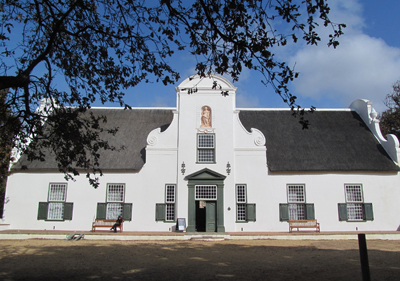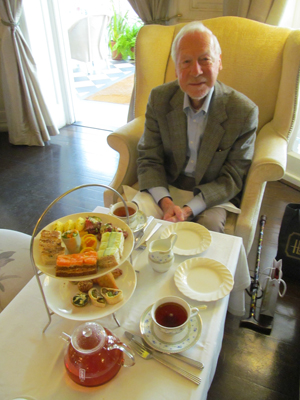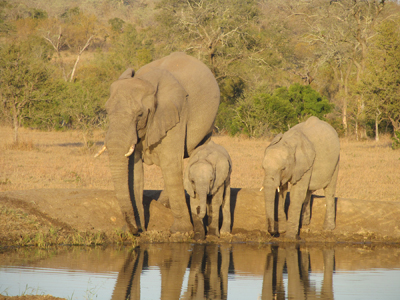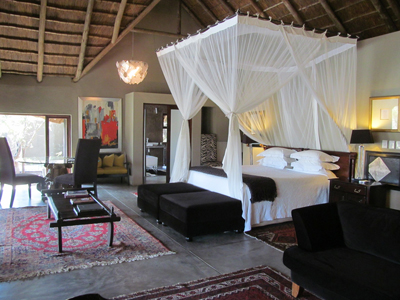Five weeks in Cape Town — getting to know South Africa’s ‘Mother City’
This article appears on page 6 of the February 2016 issue.
For almost as long as my husband, Paul, and I have been traveling, Cape Town has been what Paul calls a “whiz city.” When traveling in the southern part of Africa, we’d whiz into Cape Town, spend a few days, then leave for some other destination. We decided it was time to explore Cape Town as a destination in itself rather than as a place to quickly visit on the way to someplace else.
In the late spring of 2015, we made this city, located on the Cape Peninsula in southwestern South Africa, our home for five weeks. This gave us time to finally get to know the place that South Africans call the “Mother City.”
Must-see sites
Whether a visitor to Cape Town has three or four days — the average number of days most visitors spend there, according to one South African tourism official — or five weeks, as we had, there are essential sites that should not be missed.
At the top of the list is Table Mountain, the iconic landmark that dominates Cape Town… and almost every postcard. And there’s a reason it should be first on every visitor’s “must see” list! It’s often either obscured by clouds or buffeted by strong winds, and when it gets too overcast and/or too windy, the cable car to the top of the mountain stops running. So, if you don’t plan to visit very early in your trip, you may not get the chance at all.
If Table Mountain is the iconic city landmark, then the Cape of Good Hope is the iconic out-of-town attraction. It’s located 44 miles south of Cape Town on the tip of the Cape Peninsula.
Vertical sea cliffs and stretches of flat beach overlook an often-turbulent sea. It’s wild and beautiful and is a trip that’s made even better if you arrive from Cape Town via Chapman’s Peak Drive, offering seemingly endless views over the Atlantic Ocean as you travel south.
Although we took two separate excursions, many travelers combine the trip to the Cape of Good Hope with a visit to Foxy and Boulders beaches near Simon’s Town, on the east side of the Cape Peninsula. Visitors go to see the African penguins, also called jackass penguins because of their brash voices.
At Foxy Beach, the penguins are fenced in, although you can get fairly close to them from the pedestrian boardwalk, but at Boulders Beach, a 20-minute walk away, you can walk among the penguins and even swim with them.
Gardens and minarets
Back in Cape Town, two more do-not-miss sights are Kirstenbosch, the largest botanical garden in South Africa, with the added distinction of being a UNESCO World Heritage Site, and Bo-Kaap, an inner-city area of brightly painted houses, many of them inhabited by members of Cape Town’s Muslim community. Mosques with squat minarets rise among the houses.
Combine a stroll through Bo-Kaap with a visit to the small Bo-Kaap Museum, once the home of an Islamic qadi (judge).
The last of my six essential “must sees” is the V&A (Victoria & Alfred) Waterfront, the place, in my opinion, for good shopping and good dining. There’s also a large Ferris wheel from which you can see the waterfront area from high above.
Boats leave from near the Clock Tower to cross to Robben Island, where Nelson Mandela was imprisoned from 1964 to 1982.
We loved the V&A Waterfront so much that we went there eight times in our 35 days in the city, mostly for the restaurants.
Wine tasting
For me, what I experience on a trip has become as important as the sites I see. Sometimes the experiences are even more important because it’s those that I remember 10, 20, 30 years later, long after the individual sites visited have been forgotten or are fuzzy memories. There were four such experiences that were among the highlights of our Cape Town trip.
Visiting Cape Town without visiting a winery would be like visiting London without stepping into a pub. South African wines have grown in prestige over the past few decades, although wine making in South Africa has a long history.
Groot Constantia, located just a 20-minute taxi ride from Cape Town, had it all: a beautiful Cape Dutch manor house, extensive vineyards to stroll through, two restaurants and a wine-tasting room for sampling the wine estate’s wares. We liked what we tasted so much that we ordered a few cases of wine to be shipped home!
To stroll through the vineyards where the wine we were drinking came from was memorable. Since the wine grapes had all been picked by the time we visited, all that was left on the vines was some dried-up fruit. We greatly enjoyed raisin tasting as we strolled along the long rows of yellow- and orange-leaved vines.
Tea tasting
Afternoon tea at the Mt. Nelson Hotel (76 Orange St.; belmond.com/mount-nelson-hotel-cape-town) has become a tradition for us on our visits to Cape Town. This grande dame of Cape Town hotels has been housing guests in style for the past 117 years, and it’s probably been serving afternoon tea for as long.
It’s not just a cup of tea and a piece of cake that is served. It’s a pot of tea served with hot scones, a variety of mini-sandwiches and a choice of at least 15 desserts from the groaning board of a dessert table that dominates the room. (You can sample one of everything, if you wish; no one will label you a “piggy.”)
Lingering an hour over tea ($56 for two, including tip) and taking a stroll in the hotel gardens afterward made for a serene conclusion to our day of sightseeing.
Another place that we like for afternoon tea is the Cape Grace Hotel (West Quay Rd.; capegrace.com), where you can sip tea in an elegant lounge or on a glassed-in veranda overlooking the marina at the V&A Waterfront. Scones, bite-sized sandwiches and pastries are served on a 3-tier platter ($39 for two, including tip).
Outside town
A steam train run by Atlantic Rail (atlanticrail.co.za) travels from Cape Town to Simon’s Town (ZAR300, or $20, per person) usually twice a month year-round, more often during November and December. The views of False Bay on the east coast of the Cape Peninsula were superb, with waves crashing against the rocks and the long sandy beaches along the route. Request a seat on the left side of the train when booking.
This excursion should be booked well in advance of your trip because of its popularity.
Another experience we loved was visiting Stellenbosch, 31 miles east of Cape Town, where visitors can tour four 18th- and 19th-century houses in a town founded in 1679. The houses are located just steps from each other and are all part of Stellenbosch Village Museums.
If you didn’t do a wine tasting at Groot Constantia, you’ll have a second chance in Stellenbosch. There are more than 200 wine estates in the area, and there are suggested routes to follow if you’d like to visit several wineries.
Museum heaven
Cape Town is rich in museums, which we mostly saved for drizzly days. In no particular order, these are the eight we most enjoyed: Castle of Good Hope, a fortress completed in 1679; Slave Lodge, also completed in 1679, where slaves owned by the Dutch East India Company were housed; Rust en Vreugd House, the manor house of a prominent 18th-century Capetonian lawyer; the South African Museum, displaying the fabulous Linton rock art panel and the impressive ceramic Lydenburg Heads; the South African National Gallery, featuring works by South African artists plus temporary exhibits, and the South African Jewish Museum, with a reconstruction of a 19th-century Lithuanian shtetl (village). This last museum also has an extensive Japanese netsuke miniatures collection.
There’s also the District Six Museum, documenting the lives of those whose neighborhood was bulldozed during the time of apartheid, and the Two Oceans Aquarium, with exhibits from both the Atlantic and Indian oceans, including a penguin habitat with daily feedings.
Enjoyable excursions
From Cape Town, we made two multiday excursions, spending two nights at Bushmans Kloof ($862, all inclusive) and three at Grand Dédale ($742) on the Doolhof Wine Estate.
Traveling to Bushmans Kloof, 160 miles north of Cape Town in the Cederberg wilderness area, rates as one of the very special experiences of the trip for us. Some of the oldest paintings in the world — rock art estimated to be 2,000 to 10,000 years old — are located in more than 130 caves and overhangs scattered over the huge, 18,000-acre property.
You must be a guest at Bushmans Kloof to see a sampling of the rock art sites on the estate. Deluxe accommodations in cottages, gourmet dining and a host of other activities for guests, including nature drives, canoeing, fishing and swimming, are available. We only wish we had allotted three or four nights there instead of just two.
Our second excursion was to Grand Dédale on the Doolhof Wine Estate near Wellington, 51 miles northeast of Cape Town. There we indulged in gourmet dining ($232 for three nights) while living in one of the most elegant cottages we’ve ever stayed in. Our living room/bedroom duplex included a wood-burning fireplace and floor-to-ceiling shuttered windows overlooking meadows in one direction and the 300-year-old estate manor house in the other.
We spent three days strolling through the orange groves and vineyards of the estate, visiting the herd of sleek horses and exploring some of the small towns and villages nearby with their distinctive Cape Dutch architecture.
The highlight of our stay was the wine tasting offered just steps away from our cottage. Pretending we were knowledgeable wine critics, Paul and I selected five Doolhof wine samples and leisurely smelled, tasted and evaluated each one. It was fun, even if we had little idea of what we were doing.
The wine tasting did make it on our list of best South African experiences. We even managed to agree on one of the wines as our personal favorite: a red called Dark Lady, with an incredible chocolate aroma.
Gourmet dining
Dining well ranks high with us when we travel, and we were not disappointed in Cape Town. This city is blessed with a multitude of restaurants to suit every taste. We estimate that we sampled at least 40 restaurants during our stay, sometimes dining out for both lunch and dinner on the same day.
After much heated discussion with Paul, these are our 10 favorite restaurants, the first half of which were in the V&A Waterfront area: Belthazar for great steaks; Beijing Orchid for Chinese cuisine; Den Anker for Belgian specialties, including Belgian beers; Greek Fisherman for mezze, and Meloncino for Italian food.
The other five restaurants were Harbour House in Kalk Bay, 19 miles south of Cape Town, for sushi and seafood; Harveys in Sea Point, a Cape Town suburb not far from the city center, for great bar food; La Perla, also in Sea Point, for Italian food; Paranga in Camps Bay, another suburb, for seafood, and the Twelve Apostles bar, also in Camps Bay, for tapas accompanied by an ocean view.
Dinners for two, including tip, ranged from $32 at Meloncino to $92 at Belthazar.
Although not on our top-10 list, The Africa Café deserves a special mention because it serves pan-African cuisine, including food from Ethiopia, Morocco, Malawi and Senegal, among others. A parade of drummers occasionally marches through the dining rooms to liven things up a bit for diners.
A grand finale
As good as Cape Town — its sights, dining and excursions — was, there was more yet to come. We capped off our five weeks in this fantastic city with a sixth week on safari.
We’ve been on safari six times before, but this latest safari topped them all, both in animal sightings and in the level of accommodations and dining.
With the help of travel designer Ozan Yerlikaya, we selected Chitwa Chitwa in the Sabi Sand Private Game Reserve, part of Kruger National Park, 1,160 miles northeast of Cape Town. Our all-inclusive 4-night safari cost a total of $5,800.
On a scale of 1 to 10, Chitwa Chitwa is a 10 on all counts.
On our first game run, we spotted four of the Big Five: Cape buffalo, elephant, white rhino and leopard. The leopard is one of those elusive animals that you consider yourself lucky to see even once on most safaris. At Chitwa Chitwa, we saw a leopard on six of our eight game drives plus an additional time as we were exiting the safari camp to catch our flight to Johannesburg.
The remaining member of the Big Five — the lion — we saw on our second game drive and then on every outing after that.
Although luxury accommodations and gourmet dining are not the reasons most plan to take a safari, it’s wonderful when you can have your cake and eat it too. At Chitwa Chitwa we had a large cottage with a wood-burning fireplace, a king-sized bed swathed in netting, indoor and outdoor showers and a deck with a private swimming pool. Our closest neighbor was the family of hippos that cavorted in the lake in front of the cottage when they weren’t dozing in the grass beside it.
Dining at Chitwa Chitwa was amazing, especially considering we were on safari rather than in a city full of good restaurants. We chose to dine each night in front of our cottage fireplace rather than in the lodge’s dining room. It was very cozy and romantic, especially with a bottle of South African wine at hand.
Chitwa Chitwa was the icing on our South African cake. There could not have been a better way to end our trip than to sit in front of a blazing fire listening to the hippos snorting right outside our windows.
If you go…
For our five weeks in Cape Town, we rented a house called Villa Kasbah in the suburb of Fresnaye, a 15-minute cab ride from the center of the city. Our rental home, which cost $5,536 for five weeks, came with a living/dining room with a wood-burning fireplace, four bedrooms, 4½ bathrooms, a library, a movie-viewing room and a fully equipped kitchen with a washer, dryer and dishwasher.
We had three spacious terraces, a small leafy, enclosed Zen garden and a heated swimming pool. (Heating the pool cost an extra $636 for all five weeks.) From the house, there were views of the ocean (distant) and Lion’s Head mountain (just behind the house).
We booked through SeaSky Villa Management (phone 011 27 27 82 324 7760, www.seaskyvillas.com).
Our safari to Chitwa Chitwa was arranged by Ozan (Ozzy) Emre Yerlikaya (phone 011 27 27 76 907 9466, www.traveldesigner.com). Ozzy can design an entire trip, a portion of a trip or an excursion to suit your individual interests. Besides South Africa, he can put together a trip to other countries in Southern and Eastern Africa, including Namibia, Zimbabwe and Tanzania.
A word of advice if adding a safari to your South African trip — morning safari game drives often begin before sunrise, and late-afternoon drives often continue well past sunset, especially if you travel during South Africa’s colder winter months of April to September. Take along a scarf, hat, gloves and warm jacket. You’ll be happy you did.





